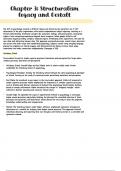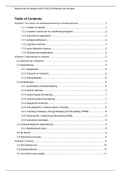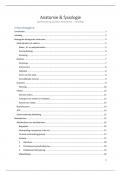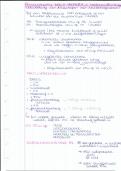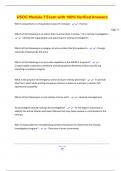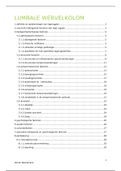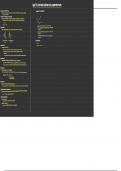Module Eleven: Economic Systems
Economic system - An economic system is a means by which societies or governments organize and distribute available resources, services, and goods across
the country. Economic systems regulate the factors of production, including land, capital, labour. (How the country handles all their economic activities)
Three main economic systems are: planned system (Communism); Market system (Capitalism) and the traditional system. Mixed Economies (Socialism and
Capitalism) are those that adopt different aspects of the above three systems.
Traditional System Planned system Market System Mixed Economies
People produce items to cater for The government controls all Market forces of demand and supply The market and government
their own basic needs. Goods are economic activities of the country. determine what products are made, involved in the economic activities
not bought or sold, but maybe Low level of unemployment. sold and at what price. of the country.
bartered or swapped. No free businesses or little free There is free competition and little Government gets involved when it is
Focus on primary sector. businesses. government intervention. for the benefit of the people.
Economic activity comes after
religious and cultural belief. Advantages: Advantages: Advantages:
No extra goods are produced to be No duplication as everything is Wide range of products and services Provides fair competition – quality
sold. planned. to meet the consumer’s needs. of goods and services are not
No competition between firms so Quick response to consumer needs. compromised.
Advantages: there is less waste. Encourages creativity and cheaper Seeks to prevent monopolies via a
Simple basic way of life. Wealth is distributed equally methods of production. competition policy (prevent the
Economies not dependant on amongst all man so there is no Workers are motivated, as the abuse of economic power; regulate
others. inequality. harder they work, the more they the growth of market power;
Respect for each other as culture is No private businesses that may earn. prevent price fixing and collusion).
important. exploit workers or consumers. Disadvantages: Optimum use of resources as the
Disadvantages: Disadvantages: Factors of production will on be private and government sector are
Very little opportunity for growth. Lack of competition may lead to used if it generates a profit. involved.
Dependant on what is available and poor efficiency, service delivery, and Social effects of production may be Consumer given more power.
climate. inventiveness. ignored (pollution) Disadvantages:
Can lead to hardship if basic needs Restrict economic freedom. Can fail to produce certain goods. Economy under pressure to
are not met. Consumers with more money have redistribute wealth.
Example: more options. Government corruption leads to
Example: North Korea, Cuba, Iran, Libya poor service delivery.
Developing and underdeveloped Example: Example:
countries. USA, Japan, Sweden South Africa, UK, France
,Global Economies: this refers to the expansion of economies beyond the country.
Globalisation is the interaction of economies across the world, through trade. This is evident through the price of oil, as oil is an important factor of production
in most businesses.
Businesses that have success within their country, expand their businesses to other countries. This allows consumers to have access to products worldwide.
International trade agreements have made international trade more competitive. South Africa depend on other countries for the import of technology, which
helps us develop our country.
Even though globalisation has advantages, the disadvantage is the fact that poor countries, may become even poorer, as they do not have the technology or
the money to compete in the global market.
, Module Twelve: The Circular flow in a closed economy
Capital Money needed or used to start a business.
Fixed capital Do not change for at least three years – Example land, building and equipment.
Working Capital Mainly stock of semi-finished or finished goods that will be sold.
Own Capital Money that entrepreneur puts into the business by himself.
Borrowed Capital Money borrowed from financial institutions to start and run the business.
Labour The human physical and mental effort used to produce goods. Broken into three categories (skilled; semi-skilled; unskilled)
Skilled Labour People who have obtained a qualification in a particular field. (Teacher/doctor/nurse)
Semi-skilled labour Workers who have some level of expertise but is normally limited in one direction. (plumber/electrician)
Unskilled Labour Workforce that is generally involved in manual labour. They do no have skills training.
Natural Resources Material used to produce goods. (water/air/minerals) In SA we have gold, diamonds, platinum and land as natural resources.
Entrepreneur Person who combines the factors of production to create goods to be sold in order to make a profit.
Wages and Salaries Amount of money paid to workers for the job that they do.
Profit The money the entrepreneur makes from sales of goods or services.
Circular Flow Shows how the different parts of an Economic sector fit together.
Closed Economy: An economy that is self-sufficient, it satisfies all its own needs. Dependant on agriculture and farming methods to survive.
They are not involved in trade with other countries. They do not import or export any goods. They do not borrow from other countries. The residents do not
go to other countries to work.
Flow of money in a business:
Starting point of a business is buying raw materials. After
Start with Money
getting the raw materials, one needs to get equipment and
capital. Labour is then required to change the raw materials
Customer Raw materials into products. The product is then sold to the customer.
After the entrepreneur pays his labour, buys more raw
materials, the money he has left is his profit. He can then
start the cycle again.
Capital
Product
(Money and Equipment)
Labour
Economic system - An economic system is a means by which societies or governments organize and distribute available resources, services, and goods across
the country. Economic systems regulate the factors of production, including land, capital, labour. (How the country handles all their economic activities)
Three main economic systems are: planned system (Communism); Market system (Capitalism) and the traditional system. Mixed Economies (Socialism and
Capitalism) are those that adopt different aspects of the above three systems.
Traditional System Planned system Market System Mixed Economies
People produce items to cater for The government controls all Market forces of demand and supply The market and government
their own basic needs. Goods are economic activities of the country. determine what products are made, involved in the economic activities
not bought or sold, but maybe Low level of unemployment. sold and at what price. of the country.
bartered or swapped. No free businesses or little free There is free competition and little Government gets involved when it is
Focus on primary sector. businesses. government intervention. for the benefit of the people.
Economic activity comes after
religious and cultural belief. Advantages: Advantages: Advantages:
No extra goods are produced to be No duplication as everything is Wide range of products and services Provides fair competition – quality
sold. planned. to meet the consumer’s needs. of goods and services are not
No competition between firms so Quick response to consumer needs. compromised.
Advantages: there is less waste. Encourages creativity and cheaper Seeks to prevent monopolies via a
Simple basic way of life. Wealth is distributed equally methods of production. competition policy (prevent the
Economies not dependant on amongst all man so there is no Workers are motivated, as the abuse of economic power; regulate
others. inequality. harder they work, the more they the growth of market power;
Respect for each other as culture is No private businesses that may earn. prevent price fixing and collusion).
important. exploit workers or consumers. Disadvantages: Optimum use of resources as the
Disadvantages: Disadvantages: Factors of production will on be private and government sector are
Very little opportunity for growth. Lack of competition may lead to used if it generates a profit. involved.
Dependant on what is available and poor efficiency, service delivery, and Social effects of production may be Consumer given more power.
climate. inventiveness. ignored (pollution) Disadvantages:
Can lead to hardship if basic needs Restrict economic freedom. Can fail to produce certain goods. Economy under pressure to
are not met. Consumers with more money have redistribute wealth.
Example: more options. Government corruption leads to
Example: North Korea, Cuba, Iran, Libya poor service delivery.
Developing and underdeveloped Example: Example:
countries. USA, Japan, Sweden South Africa, UK, France
,Global Economies: this refers to the expansion of economies beyond the country.
Globalisation is the interaction of economies across the world, through trade. This is evident through the price of oil, as oil is an important factor of production
in most businesses.
Businesses that have success within their country, expand their businesses to other countries. This allows consumers to have access to products worldwide.
International trade agreements have made international trade more competitive. South Africa depend on other countries for the import of technology, which
helps us develop our country.
Even though globalisation has advantages, the disadvantage is the fact that poor countries, may become even poorer, as they do not have the technology or
the money to compete in the global market.
, Module Twelve: The Circular flow in a closed economy
Capital Money needed or used to start a business.
Fixed capital Do not change for at least three years – Example land, building and equipment.
Working Capital Mainly stock of semi-finished or finished goods that will be sold.
Own Capital Money that entrepreneur puts into the business by himself.
Borrowed Capital Money borrowed from financial institutions to start and run the business.
Labour The human physical and mental effort used to produce goods. Broken into three categories (skilled; semi-skilled; unskilled)
Skilled Labour People who have obtained a qualification in a particular field. (Teacher/doctor/nurse)
Semi-skilled labour Workers who have some level of expertise but is normally limited in one direction. (plumber/electrician)
Unskilled Labour Workforce that is generally involved in manual labour. They do no have skills training.
Natural Resources Material used to produce goods. (water/air/minerals) In SA we have gold, diamonds, platinum and land as natural resources.
Entrepreneur Person who combines the factors of production to create goods to be sold in order to make a profit.
Wages and Salaries Amount of money paid to workers for the job that they do.
Profit The money the entrepreneur makes from sales of goods or services.
Circular Flow Shows how the different parts of an Economic sector fit together.
Closed Economy: An economy that is self-sufficient, it satisfies all its own needs. Dependant on agriculture and farming methods to survive.
They are not involved in trade with other countries. They do not import or export any goods. They do not borrow from other countries. The residents do not
go to other countries to work.
Flow of money in a business:
Starting point of a business is buying raw materials. After
Start with Money
getting the raw materials, one needs to get equipment and
capital. Labour is then required to change the raw materials
Customer Raw materials into products. The product is then sold to the customer.
After the entrepreneur pays his labour, buys more raw
materials, the money he has left is his profit. He can then
start the cycle again.
Capital
Product
(Money and Equipment)
Labour

